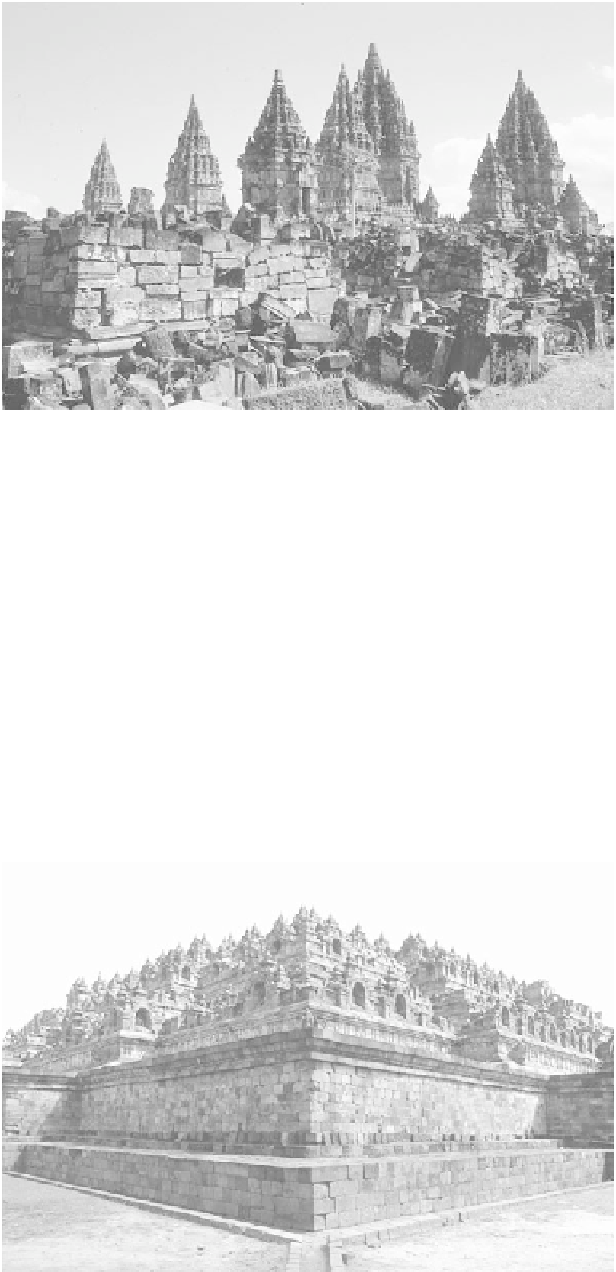Geography Reference
In-Depth Information
Figure 14-7
Evidence of early Hindu kingdoms in Java, Indo-
nesia, these temples at Prambanan have suffered
earthquake damage. The 232 temples were built
between 900 and 930 AD. Like Borobudur , they
represent the cosmic Mount Meru. The largest
three temples are dedicated to Brahma, Shiva, and
Vishnu. Prambanan is the largest Hindu temple
complex in Indonesia.
Photograph courtesy of
B. A. Weightman.
temple complex of Borobudur (built in the eighth cen-
tury) stands as a testament to the strength of Buddhism
(Figure 14-8). All of Southeast Asia, with the exception of
the T Tonkin region of northern Vietnam and the Philip-
pines, was impacted by Indian culture.
broke away in 907
AD
. China referred to the region of the
southern seas as
Nanyang
. Its cultural impact was the di-
rect result of colonization and conquest. Chinese admin-
istration style, writing system, and Confucian classics
were all superimposed on indigenous culture. Many Chi-
nese cultural influences have persisted in Vietnam.
By the sixteenth century , Chinese trading communi-
ties were permanently established throughout the region.
However, large-scale Chinese migration did not take
place until the turmoil of China' s nineteenth century ,
when thousands of Chinese migrated from southern
China to work in mines, on plantations, and in other
European-operated enterprises. Others came as farmers,
The Chinese Influence
The earliest contact with China can be traced to the Qin
Dynasty (221-207
BC
). Chinese influence diffused over-
land; the region mainly affected was Vietnam. In fact,
northern Vietnam remained a Chinese territory until it
Figure 14-8
Built by Buddhists on Java in the eighth century
at the height of the Sailendra Dynasty , Borobudur' s
construction took about 75 years. It comprises
1,600,000 volcanic, andesite stones and is orna-
mented with at least 1,500 bas reliefs and 500
statues of Buddha. No mortar was used in its
construction. The large base platform was added
at a later date and hides a panel of reliefs known
as the “hidden foot.” Borobudur stands as a stupa,
a replica of the cosmic Mount Meru, center of the
universe, and as a mandala to assist meditation.
The complex was covered by tropical vegetation
until it was discovered by the Dutch in the 17th
century .
Photograph courtesy of B. A. Weightman.


















Search WWH ::

Custom Search